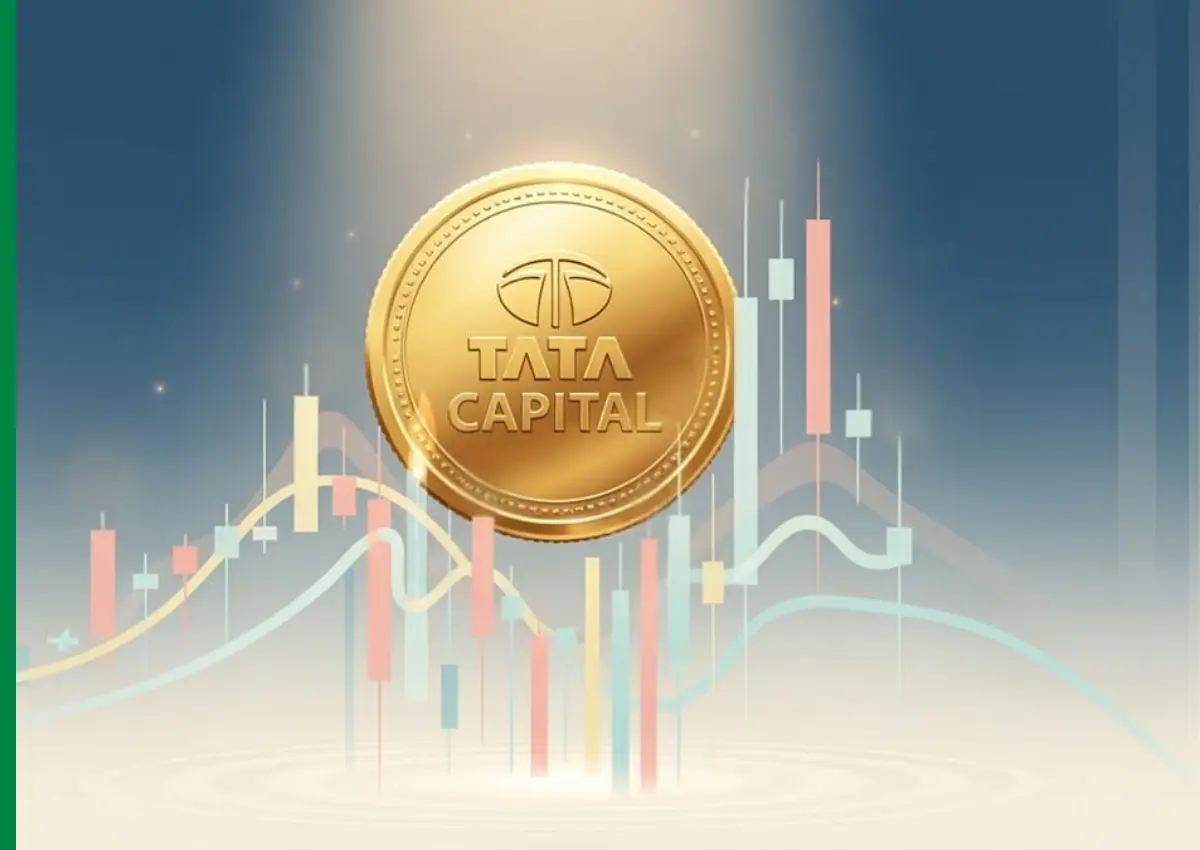Tata capital is preparing to release what may be the largest Initial Public Offering (IPO) of the year 2025 (TATA Capital IPO) and this is causing excitement in India financial markets. This milestone offering with an enormous target of ₹15,512 crore has already attracted the interest of some of the largest global and domestic institutional investors.
In the event you are thinking about investing or have no idea why this IPO is so special, this detailed insight will dissect everything you have to know about tata capital ipo.
Understand Tata Capital
Tata Capital is a leading non-banking financial enterprise (NBFC) of the reputed Tata Group brand. With its lending services ranging between consumer lending and commercial lending, the company can be considered a major player in the lending industry of India and is diversified as a financial services company.
Tata Capital is now a large financial institution run by Managing Director and CEO Rajiv Sabharwal, and is looking to enter the public markets in the first time in its history. The move by the company to go public will be a milestone not only to the Tata Group but also to the NBFC in India in general.
IPO Details— Size, Timeline, and Price Band
The Tata Capital IPO opens for subscription on October 6, 2025, and will close on October 8, 2025, giving investors a three-day window to participate in this historic offering.
Key IPO Parameters:
- Total Issue Size: ₹15,512 crore at the upper price band.
- Price Band: ₹310 to ₹326 per share.
- Fresh Issue: 21 crore equity shares.
- Offer for Sale (OFS): 26.58 crore shares from existing shareholders.
- Selling Shareholders: Tata Sons and International Finance Corporation (IFC).
Pricing Strategy Explained
Another interesting bit about this IPO is the pricing of the IPO compared to the fundraising exercises that the company has undertaken in the recent past. This price range of 310-326 per share is substantially lower than the rights issue price of 343 per share, by which Tata Capital has raised 1750 crore within three months, in July 2025, itself.
Institutional appetite and retail affordability According to Rajiv Sabharwal, this pricing approach indicates that the board aims to strike a balance between institutional appetite and retail affordability.
The company intends to price below the rights issue so that more investors, especially the retail investors who constitute the foundation of the successful Indian IPOs will make the offering attractive.
High Anchor Interest— Who is betting on Tata capital?
The caliber of anchor investors can also act like a measure of the success of an IPO and Tata Capital has brought on board a list of marquee investors.
Global Institutional Investors:
- Morgan Stanley’s Counterpoint Global: Known for its long-term investment approach and selective portfolio.
- Goldman Sachs Asset Management: A heavyweight in global asset management.
- Nomura Asset Management: Bringing Japanese institutional capital to the table.
Domestic Participation:
- White Oak Capital Partners: A respected homegrown fund management firm
- Major Domestic Mutual Funds: Several prominent Indian mutual funds have reportedly placed anchor bids
Such a variety of international and domestic institutional interest is an indicator of a high level of confidence in the business model of Tata Capital and its business future.
Retail investors are usually assured with the entry of anchor investors, who they normally ensure make very good due diligence before they commit their capital.
Proceeds Use: Strengthening Capital Adequacy.
This is in contrast to other IPOs where proceeds are used to settle debts or expropriate the promoters of the company, the fresh issue element in Tata Capital has a definite strategic rationale: to increase capital adequacy.
The IPO proceeds will be used by the company to enhance its capital adequacy ratio which is projected to increase to about 22 percent after the issue.
- Regulatory Compliance: Meeting Reserve Bank of India (RBI) requirements
- Growth Capacity: Supporting loan book expansion
- Risk Management: Creating buffers against potential loan losses
- Competitive Positioning: Matching or exceeding peer benchmarks
A strong capital base enables NBFCs to lend more aggressively while maintaining financial stability, a critical factor in India’s competitive financial services landscape.
The GST Tailwind: Timing Couldn’t Be Better
The IPO of Tata Capital is timely, as the central government has just announced its intention to lower GST rates in a number of industries. There are several ways that the company is likely to gain out of this policy move.
Tata Capital has already experienced a good move towards the auto sector, as this is a major business segment. The CEO Rajiv Sabharwal claims that its automobile, commercial, and two-wheeler sales have grown directly affecting the company auto loan portfolio.
Lagged Benefits Through the Supply Chain
In addition to direct consumer buying, Sabharwal is foreseeing a second wave of benefits in the next three months. With the reduction of costs of raw materials (especially, the cost of construction materials such as cement) the general cost of construction must also fall.
This could stimulate demand across:
- Home loans and housing finance
- Commercial real estate financing
- Infrastructure project lending
- Small business loans for contractors and developers
The GST reduction essentially creates a more favorable economic environment for lending growth, positioning Tata Capital for expansion just as it raises capital through the IPO.
What Makes This IPO Significant for India’s Markets?
Largest Offering of 2025
At ₹15,512 crore, this is the biggest IPO India has seen in 2025, setting a high benchmark for capital market activity. Large, successful IPOs often create positive sentiment that benefits the broader market.
Tata Brand Premium
The Tata name carries significant weight in India, associated with trust, governance, and long-term value creation. For many retail investors, the Tata connection provides comfort when evaluating investment decisions.
NBFC Sector Spotlight
This IPO puts a spotlight on India’s NBFC sector, which has played an increasingly important role in credit delivery, particularly to underserved segments and geographies where traditional banks have limited reach.
Benchmark for Future Offerings
How this IPO performs will influence pricing and structuring decisions for other financial services companies considering public listings.
Considerations for Potential Investors
Strengths to Consider:
- Strong parentage under the Tata Group.
- Diversified business model across consumer and commercial lending.
- Quality anchor investor participation
- Clear capital deployment strategy
- Favorable macroeconomic timing with GST reductions.
Points Requiring Due Diligence:
- Asset quality metrics and non-performing asset (NPA) trends
- Competitive positioning versus other NBFCs and banks
- Interest rate sensitivity of the business model
- Regulatory environment for NBFCs
- Valuation metrics relative to listed peers
The Rights Issue Factor
The fact that the IPO is priced below the July rights issue price of ₹343 deserves consideration. While the company frames this as ensuring retail affordability, investors who participated in the rights issue at ₹343 may face immediate mark-to-market losses if allotted shares at the IPO price.
India’s Broader Financial Story
The IPO of Tata Capital is a bigger story in the changing financial services environment in India. The NBFCs have become imperative actors in the provision of credit, in most cases in sectors where the traditional banks find difficult to access in a profitable manner.
The high anchor interest of both the domestic and foreign investors further show increased global confidence about the economic trends of India. Since the country is still in the process of building up its infrastructure and consuming more, credit demand will increase, which could be used to the advantage of financial services companies such as Tata capital.
Is this IPO Right?
Tata Capital IPO is a good chance to invest in a well established NBFC supported by one of the most reputable business houses in India. Its good anchor investor interest and transparent proceeds utilization, as well as, good backdrop macroeconomic environment characterized by GST cuts, are in its favor.
Nevertheless, like any type of investment decision, future investors are encouraged to do due diligence, look through the offer document, and evaluate their own financial objectives and risk-taking abilities. Take into account such factors as your time investment, need to diversify your portfolio, and knowledge of the NBFC business model.
To people who feel that India will continue to grow economically, and the Tata Group does have the capacity to execute, this IPO is an opportunity to be a part of that tale. The three days of subscription between October 6-8 gives time to consider the offering, but big IPOs by reputable organizations are usually in high demand.
It should be kept in mind that the stock market is a risk and the previous experience or brand recognition do not necessarily promise future profits. Decide on what to do carefully through thorough examination and not just because the market is saying it is right or because one likes the brand.



